Related Research Articles

Christian Goldbach was a Prussian mathematician connected with some important research mainly in number theory; he also studied law and took an interest in and a role in the Russian court. After traveling around Europe in his early life, he landed in Russia in 1725 as a professor at the newly founded Saint Petersburg Academy of Sciences. Goldbach jointly led the Academy in 1737. However, he relinquished duties in the Academy in 1742 and worked in the Russian Ministry of Foreign Affairs until his death in 1764. He is remembered today for Goldbach's conjecture and the Goldbach–Euler Theorem. He had a close friendship with famous mathematician Leonhard Euler, serving as inspiration for Euler's mathematical pursuits.
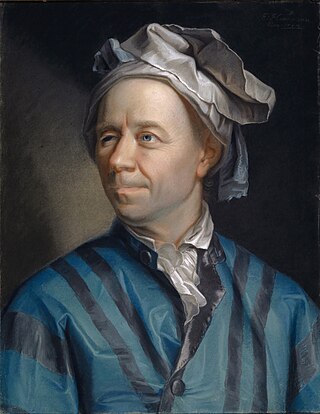
Leonhard Euler was a Swiss polymath, mathematician, physicist, astronomer, geographer, logician, and engineer who founded the studies of graph theory and topology and made pioneering and influential discoveries in many other branches of mathematics such as analytic number theory, complex analysis, and infinitesimal calculus. He also introduced much of modern mathematical terminology and notation, including the notion of a mathematical function. He is also known for his work in mechanics, fluid dynamics, optics, astronomy, and music theory. As a result, Euler has been described as a "universal genius" who "was fully equipped with almost unlimited powers of imagination, intellectual gifts and extraordinary memory".
Mathematics is a field of study that discovers and organizes methods, theories and theorems that are developed and proved for the needs of empirical sciences and mathematics itself. There are many areas of mathematics, which include number theory, algebra, geometry, analysis, and set theory.
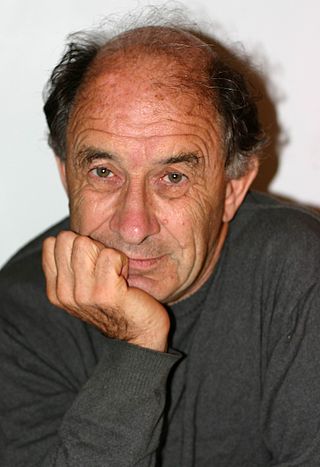
Vladimir Igorevich Arnold was a Soviet and Russian mathematician. He is best known for the Kolmogorov–Arnold–Moser theorem regarding the stability of integrable systems, and contributed to several areas, including geometrical theory of dynamical systems, algebra, catastrophe theory, topology, real algebraic geometry, symplectic geometry, differential equations, classical mechanics, differential-geometric approach to hydrodynamics, geometric analysis and singularity theory, including posing the ADE classification problem.
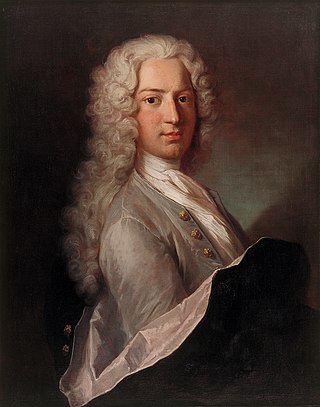
Daniel Bernoulli was a Swiss mathematician and physicist and was one of the many prominent mathematicians in the Bernoulli family from Basel. He is particularly remembered for his applications of mathematics to mechanics, especially fluid mechanics, and for his pioneering work in probability and statistics. His name is commemorated in the Bernoulli's principle, a particular example of the conservation of energy, which describes the mathematics of the mechanism underlying the operation of two important technologies of the 20th century: the carburetor and the aeroplane wing.

Philosophiæ Naturalis Principia Mathematica often referred to as simply the Principia, is a book by Isaac Newton that expounds Newton's laws of motion and his law of universal gravitation. The Principia is written in Latin and comprises three volumes, and was authorized, imprimatur, by Samuel Pepys, then-President of the Royal Society on 5 July 1686 and first published in 1687.
Newton's laws of motion are three physical laws that describe the relationship between the motion of an object and the forces acting on it. These laws, which provide the basis for Newtonian mechanics, can be paraphrased as follows:
- A body remains at rest, or in motion at a constant speed in a straight line, except insofar as it is acted upon by a force.
- At any instant of time, the net force on a body is equal to the rate at which the body's momentum is changing with time.
- If two bodies exert forces on each other, these forces have the same magnitude but opposite directions.
The following is a timeline of classical mechanics:

Joseph-Louis Lagrange, also reported as Giuseppe Luigi Lagrange or Lagrangia, was an Italian mathematician, physicist and astronomer, later naturalized French. He made significant contributions to the fields of analysis, number theory, and both classical and celestial mechanics.

The Seven Bridges of Königsberg is a historically notable problem in mathematics. Its negative resolution by Leonhard Euler, in 1736, laid the foundations of graph theory and prefigured the idea of topology.

Archytas was an Ancient Greek mathematician, music theorist, statesman, and strategist from the ancient city of Taras (Tarentum) in Southern Italy. He was a scientist and philosopher affiliated with the Pythagorean school and famous for being the reputed founder of mathematical mechanics and a friend of Plato.

Jakob Hermann was a mathematician who worked on problems in classical mechanics. He is the author of Phoronomia, an early treatise on mechanics in Latin, which has been translated by Ian Bruce in 2015-16. In 1729, he proclaimed that it was as easy to graph a locus on the polar coordinate system as it was to graph it on the Cartesian coordinate system.
In physics, mechanics is the study of objects, their interaction, and motion; classical mechanics is mechanics limited to non-relativistic and non-quantum approximations. Most of the techniques of classical mechanics were developed before 1900 so the term classical mechanics refers to that historical era as well as the approximations. Other fields of physics that were developed in the same era, that use the same approximations, and are also considered "classical" include thermodynamics and electromagnetism.
A mechanician is an engineer or a scientist working in the field of mechanics, or in a related or sub-field: engineering or computational mechanics, applied mechanics, geomechanics, biomechanics, and mechanics of materials. Names other than mechanician have been used occasionally, such as mechaniker and mechanicist.
The 18th-century Swiss mathematician Leonhard Euler (1707–1783) is among the most prolific and successful mathematicians in the history of the field. His seminal work had a profound impact in numerous areas of mathematics and he is widely credited for introducing and popularizing modern notation and terminology.

Introductio in analysin infinitorum is a two-volume work by Leonhard Euler which lays the foundations of mathematical analysis. Written in Latin and published in 1748, the Introductio contains 18 chapters in the first part and 22 chapters in the second. It has Eneström numbers E101 and E102.
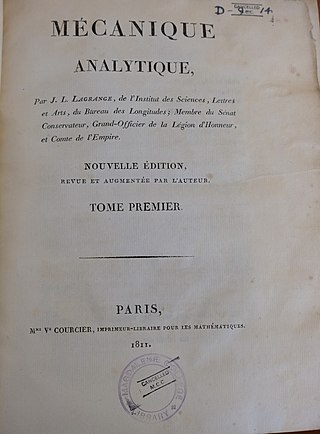
Mécanique analytique (1788–89) is a two volume French treatise on analytical mechanics, written by Joseph-Louis Lagrange, and published 101 years after Isaac Newton's Philosophiæ Naturalis Principia Mathematica.
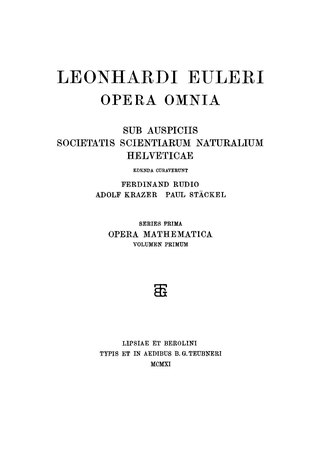
Opera Omnia Leonhard Euler (Leonhardi Euleri Opera omnia) is the compilation of Leonhard Euler's scientific writings. The project of this compilation was undertaken by the Euler Committee of the Swiss Academy of Sciences, established in 1908, and is ongoing as of September 2022. The Committee decided on "the edition of the Collected Works of Leonhard Euler in the original languages, convinced of rendering the entire scientific world a service thereby", and, in 1919, it indicated to collect “All works from Leonhard Euler, hitherto unseen or already printed, coming from St Petersburg or elsewhere need to be integrated. This also includes the scientific letters of Euler”. The project has been supported by the international community, notably the Petersburg Academy of Sciences where Euler taught and which lent out its Euler materials in 1910. Publishing Euler's Opera Omnia has been termed "one of the most extraordinary projects in publishing".
References
- ↑ William Whewell (1837). History of the inductive sciences: from the earliest to the present times, Volume 2. J. W. Parker. pp. 93–96.
- ↑ Hans Jahnke (2003). A History of Analysis - Translated from German. American Mathematical Society. p. 357. ISBN 9780821890509.
- ↑ Euler, Leonhard. "Introduction - Volume 1" (PDF). 17centurymaths. Ian Bruce. Retrieved 25 January 2022.
- ↑ Stan, Marius (2017). "Euler, Newton, and Foundations for Mechanics". In Schliesser, Eric; Smeenk, Chris (eds.). The Oxford Handbook of Newton. Oxford University Press. doi:10.1093/oxfordhb/9780199930418.013.31. ISBN 978-0-19-993041-8 . Retrieved 25 January 2022.
{{cite book}}:|website=ignored (help)